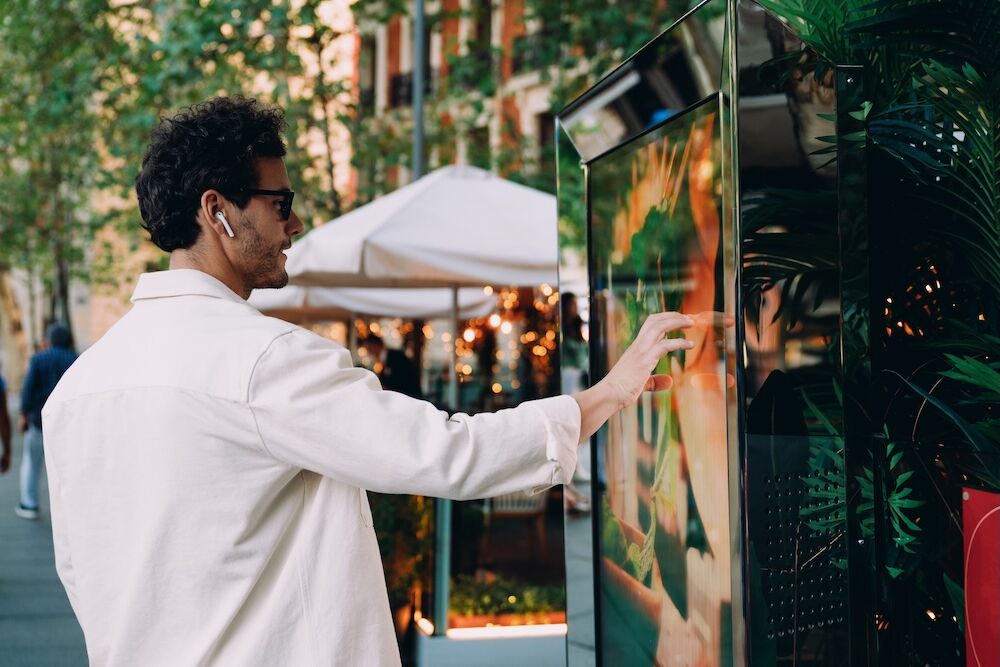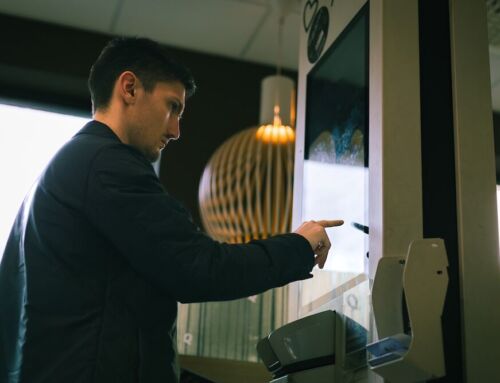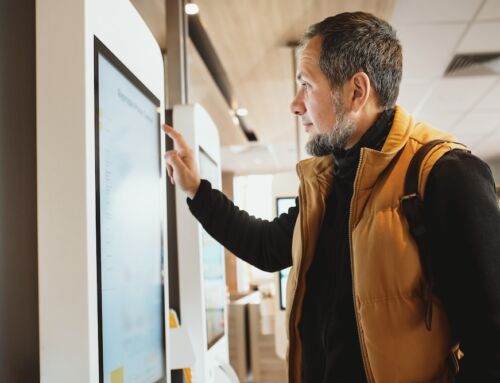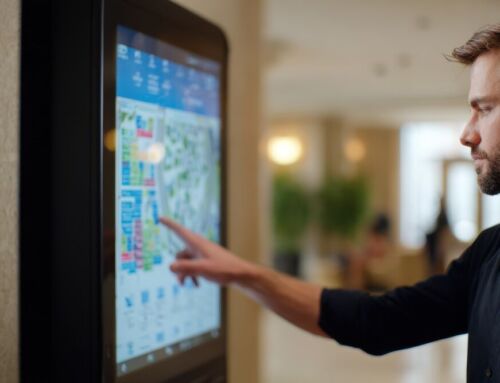You don’t have to be Bear Grylls to know that the outdoors can be a tough place to be. Rain, snow, ice, wind, temperature extremes, even bright sunshine all pose risks to survival. And that’s just to people.
For electronic devices, it takes a special breed to survive prolonged exposure to the elements. For kiosks, that’s especially true. Because once deployed outdoors, that’s where they stay. 24/7, 365, come rain or shine.
There’s a long history of kiosks being used outdoors, from parking payment and cash machines to transport ATMs. But typically, these examples have been stripped back, functional machines, built for durability and with simple features. It’s only relatively recently that large capacitative touchscreens have started to become commonplace on outdoor kiosks, for example, opening the door to the vast range of software features and intuitive UI familiar from indoor kiosks.
But as this suggests, things have changed with outdoor kiosks. They nowadays pair the resilience required to survive outside with the more advanced digital features and usability of their indoors counterparts, along with some unique outdoor-first adaptations. And what that means is that kiosks can nowadays be reliably deployed for pretty much any purpose in any external setting – drive thru ordering points, municipal/tourist information points, EV charging stations and so on and so forth.
So how exactly has kiosk technology evolved to cope with the stresses and strains of outdoor life, and how can you be sure you can trust them? Here are the three key innovations that ensure outdoor kiosks don’t just survive, but thrive.
Endurance
The most important factor in building an outdoor kiosk that lasts is weatherproofing. You have to build a unit that is robustly waterproof as well as able to withstand extremes of temperature. Think about your standard cash machine or car park ticketing machine – they’re robust, well-sealed units with relatively small/minimal controls, because these are where water can get into the unit most easily.
Until relatively recently, it was expensive to build large touchscreen with a high enough IP rating to allow them to withstand prolonged exposure to the elements. But that has changed and all-weather touchscreens are now much more readily available.
On top of that, the chipsets used to run kiosks have become more durable, with extended temperature ranges and special coatings to protect against condensation. And extra protective features like fans and dehumidifiers have become more energy efficient, so they can run without pushing up the costs.
Visibility
As well as waterproofing and durability, another essential consideration when deploying a touchscreen outdoors is making sure users can see it. Like temperature, this is a case of managing two extremes. Glare from sunlight can be just as problematic for using a GUI as an inadequately backlit screen is in the dark. Plus, the sun’s UV rays don’t take long to damage screen components, making them unreadable.
To survive outdoors, kiosk manufacturers have had to find ways to counter all of these challenges. Outdoor kiosk screens are now routinely manufactured with anti-glare glass and UV protective coatings. One of the biggest breakthroughs has been the development of ‘smart’ brightness adjustment, so the screen automatically adjusts depending on the ambient light levels.
Connectivity
Kiosks are connected devices. Running a kiosk in isolation cuts off so many benefits – easy access to app resources via the cloud, real-time data exchange and coordination with the rest of your systems, remote performance monitoring and updates – that the value of having them at all is undermined.
But when it comes to running a kiosk outdoors, that of course raises the question of how you keep them connected. Cable connections are reliable but add to installation costs, especially if you have to run new cable underground. Outdoor kiosks have therefore benefitted greatly from the evolution of wireless technologies like Wi-Fi 6 and 5G.
Edge processing, meanwhile, where software is still accessed remotely from the cloud but the compute load is shared with local machines, has greatly enhanced the speed and capabilities of connected kiosks, allowing them to handle more sophisticated programmes efficiently.




